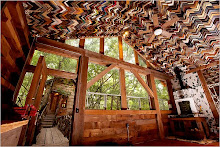

Amid rumors that the diamond industry is headed for a short-fall in "roughs," many analysts are looking at the situation very seriously. A new, productive diamond mine hasn't been discovered in the past 15 years and those planning to open, cant seem to get up the steam to keep going. According to
RBC Capital Markets analyst Des Kilalea: "Diamond mining is a hugely expensive business and finding deposits and proving their commercial viability can take several years, as well as tens or even tens of thousands of dollars." Apparently, even if a plausible diamond mine were to be found today, it couldn't open until 2015.
In addition to high costs, the business of bringing a diamond operation "on line" is a daunting. "Botswana’s Orapa [an African] mine is on the surface and yet took four years to develop," Kilalea explained. "The Jwaneng mine, also in Botswana and of the size of mine needed to overcome a possible future supply shortfall, took 10 years to move from discovery to production. The Venetia operation in South Africa took 12 years. In Canada, the Ekati mine took 10 years to find and seven to prove and build. Even roads to the mines – which may open for only a few weeks a year – can cost $20 million to build."
This is the source of the problem. It appears that despite investments of hundreds of millions of dollars in global exploration, the diamond industry has thus far failed to discover sufficient commercial diamond deposits to replace existing finite mines. As a result, production is projected to remain essentially flat for at least the next decade. Even the new mines able to come on stream will not make up for the shortfall as older mines become depleted.
Said Kilalea of RBC: "The Argyle mine in Australia that used to produce 30 million carats is now down to half that amount.
The four largest producers – De Beers, Alrosa, Rio Tinto and BHP Billiton – account for 90 percent of total diamond output, while smaller players include Harry Winston Diamond Corp, Petra Diamonds, and Gem Diamonds. “A host of mid-tier and juniors kick in the rest; they are small and often not well financed,” Kilalea said. Of the more than 100 firms involved in diamond mining, fewer than 20 have “meaningful production,” Kilalea added.
Also working against productivity is the terrain. The world’s diamond mining is concentrated in a few areas which are not at all hospitable. These include Canada’s frigid North West Territories, and Russia’s equally frigid Far East. Deposits are to be found in a range of African countries other than Botswana. However, in some cases, wading through the waters of questionable governance is as difficult as cutting through glacial ice. Some forecasters believe this opens a window for style experimentation, such as cutting overall costs by dealing with diamonds in the rough. Take the excellent examples of rough-style diamond rings (pictured above) created by Sruli Recht, a self proclaimed 'nomad' with a passion for making "ugly things beautiful." Others think the possible short-fall in diamond production leaves room for the simulated market to expand, while others would argue that there is no replacement for a "real diamond."
Still, whatever the shortfalls or the pitfalls, or the prognostications or procrastinations, one thing is crystal clear: the diamond industry isn't going away. And there is good news: If production improves, the demand for quality diamonds is quite strong. Not only is it good, but its growing. Markets like India and China are clamoring for these stones!
Said diamond industry analyst Ken Gassman said, "You can't turn around a love affair [of making and buying jewelry] the human race has had for 50,000 years. "
And new discoveries are being made every day. One of the largest high quality diamonds to date was found last fall in South African by Petra at the Cullinan mine which, as luck would have it, unearthed the world's largest diamond over 100 years ago. The
507 carat stone could be worth in excess of 20 million dollars.
 Sources: Elran DiamondsTeumim Enterprise
Sources: Elran DiamondsTeumim Enterprise
BBC News


























